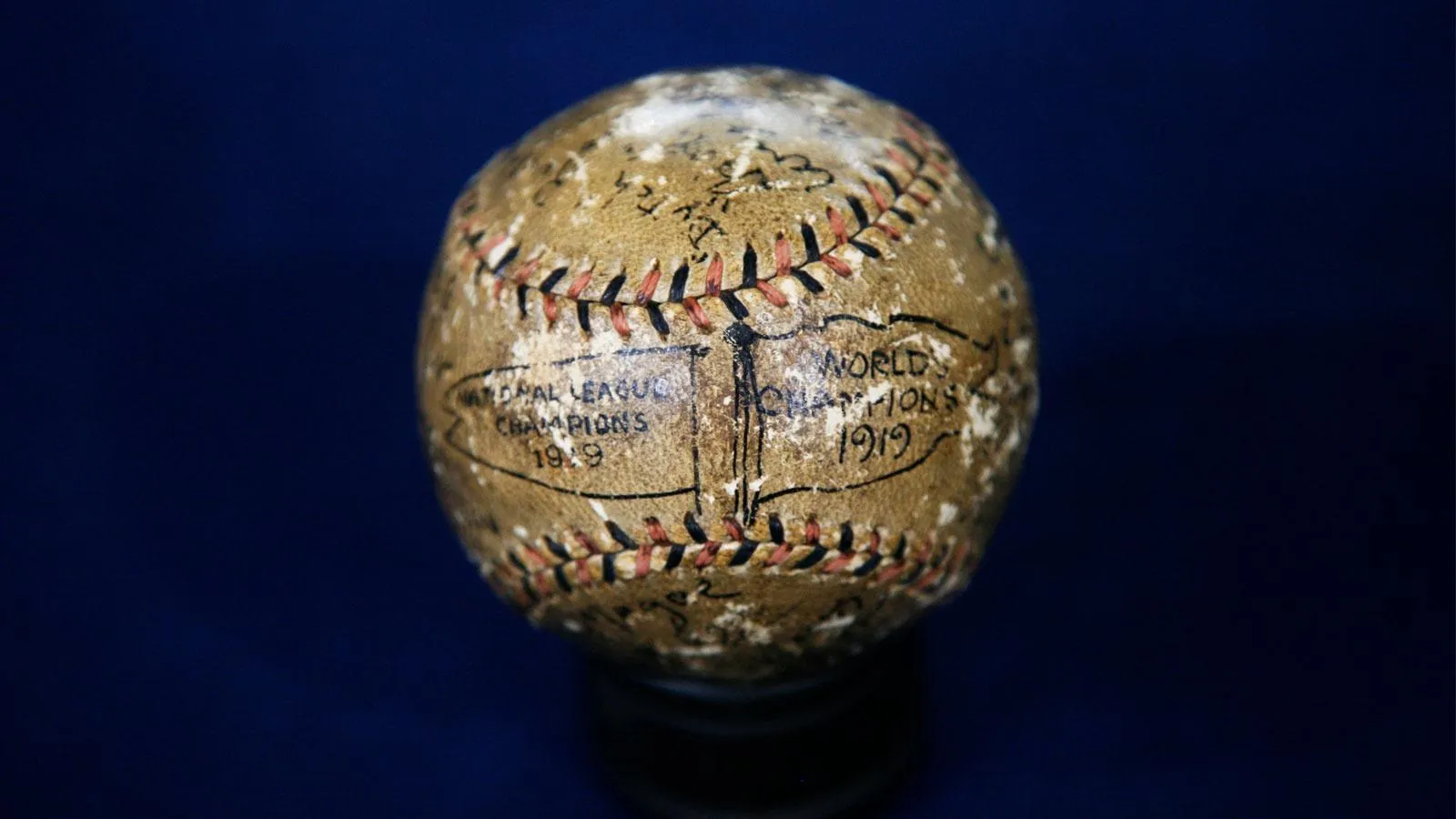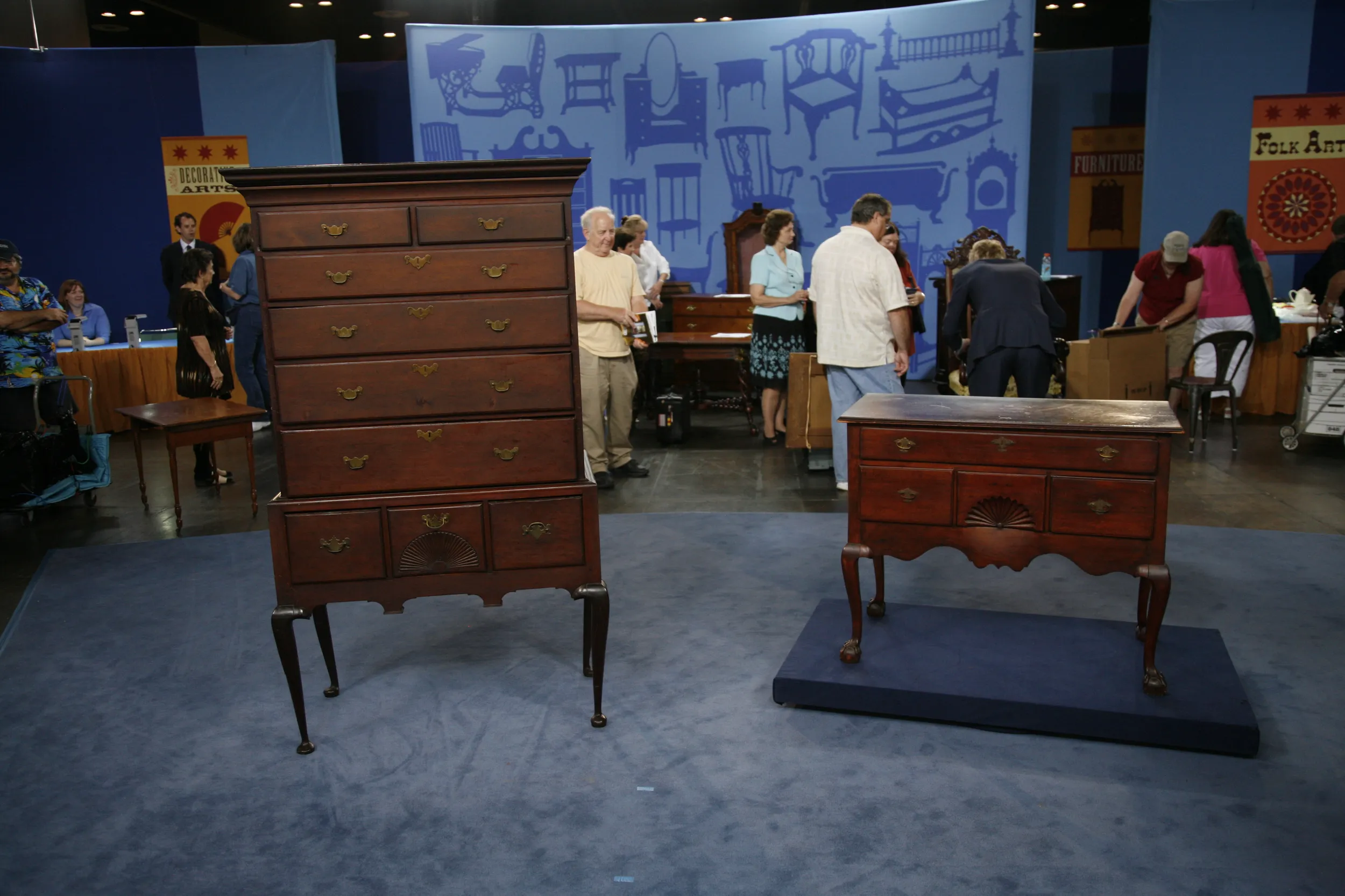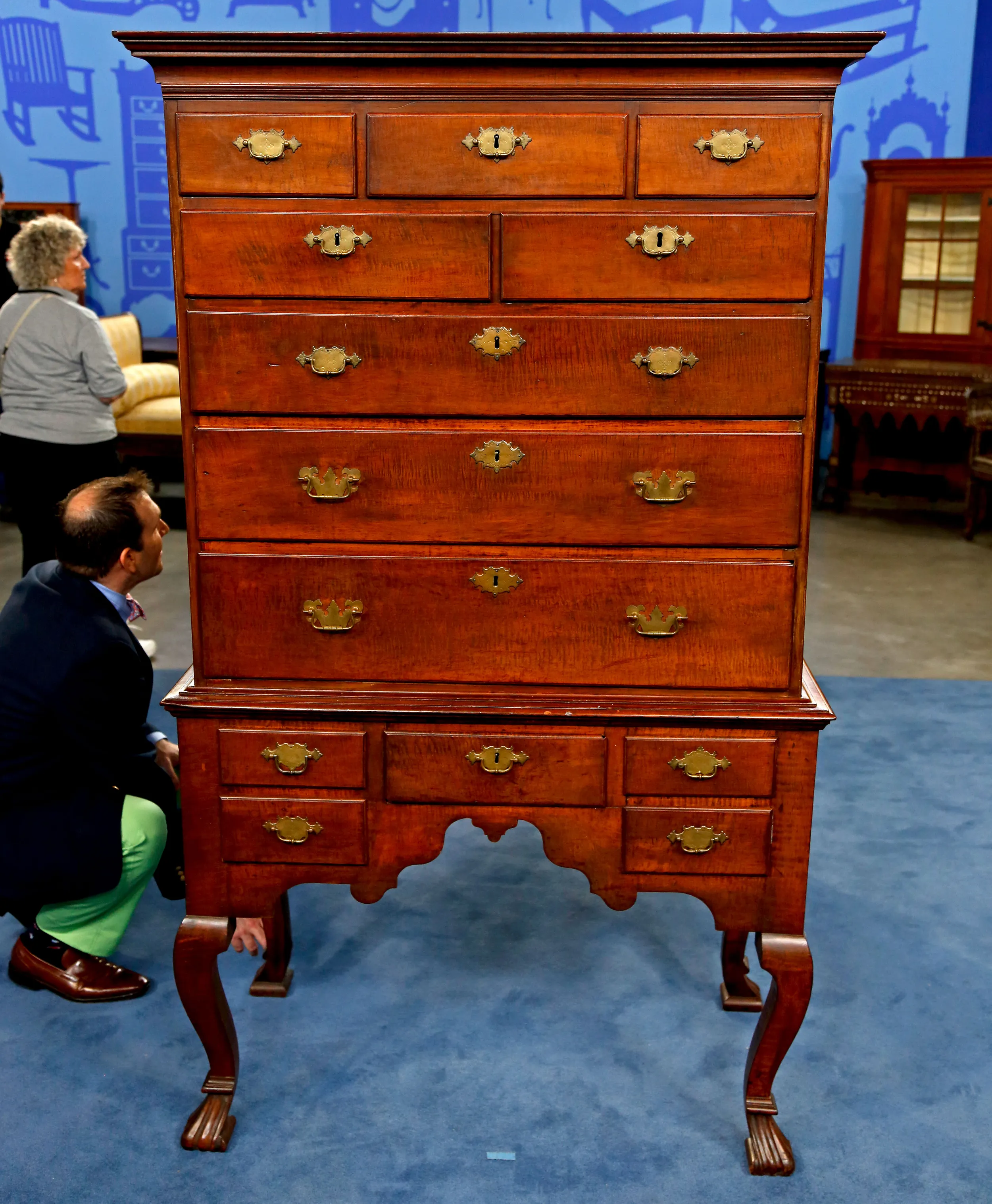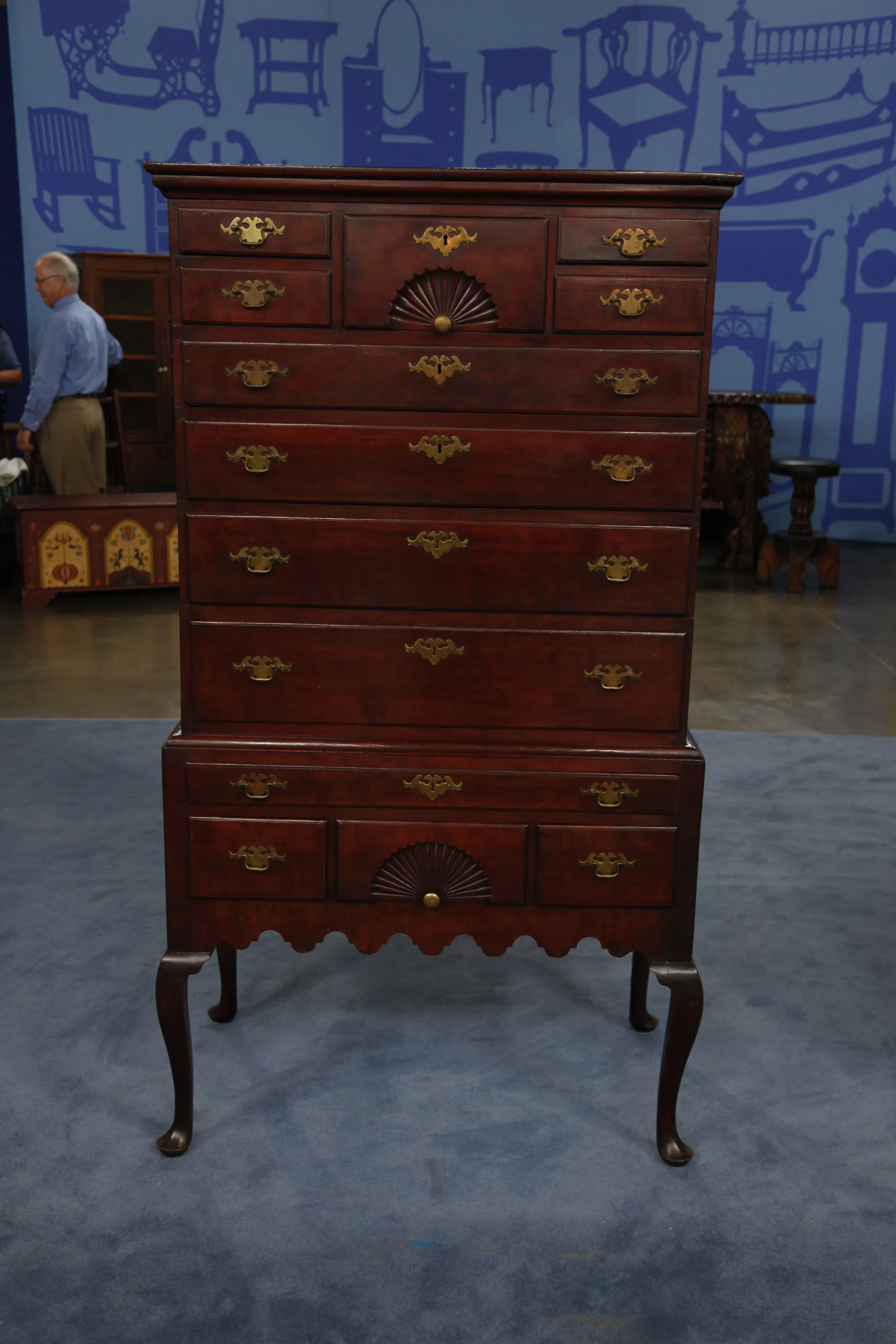GUEST: I bought it at an auction here in Louisville.
APPRAISER: Okay.
GUEST: About three-- two or three years ago.
APPRAISER: Two or three years ago. And, uh, now, what drew you to this piece?
GUEST: Well, I grew up in Connecticut.
APPRAISER: Okay.
GUEST: And we had a piece like this in my family, but another sibling got it.
APPRAISER: Ah.
GUEST: And I always wanted to have a highboy.
APPRAISER: Sister? Brother?
GUEST: Sister.
APPRAISER: Your sister got it.
GUEST: So I decided that I would love to have one of my own, and I saw this at an auction and just...
APPRAISER: And it came up at auction and you bid on it.
GUEST: Yes. Well, I assume it's made in Connecticut.
APPRAISER: Okay.
GUEST: And there is a label on the back that has a Connecticut antique dealer's name on it.
APPRAISER: Okay. This is definitely a Connecticut piece. And it's, it's pretty exciting, because we don't see a lot of Connecticut furniture like this from the colonial period in this condition. It's made about 1765-1770, so pre-Revolutionary War. And this has these pad feet, which are typical New England, and you see them in other areas. But combined with this angular knee and this beautiful shaped skirt, that beautiful rhythm that continues around the side. This is so great, it's this great cyma cut in the sides. And as you go up the case, these graduated drawers of this highboy, and then you have these wonderful pinwheels, with the center roundel, and, of course, the fan, which, which, they complement each other really nicely. Don't you think?
GUEST: Yes.
APPRAISER: We don't know the exact maker, but it probably was made in the New London County area. Now, one of the big questions about these highboys like this, or high chest of drawers, is that, because this comes apart from the bottom, sometimes they're married or associated.
GUEST: Yes.
APPRAISER: And on this one, what we're going to do, I'm going to pull out a drawer here, from the lower section, one from the top... And the great thing is, we know this one's not married.
GUEST: Ah! Wonderful!
APPRAISER: It's not married. And, and if you look here, these dovetails, see how they perfectly match?
GUEST: Yes, they do.
APPRAISER: And these are the same width of the drawer sides, same chunk of wood, same matching dovetails, same thickness. And I love this about this. Look at that right there-- there's a drawn horse in graphite, do you see that? Maybe done by a child. And the great thing about this, the lower section has this oxidized white pine secondary, typical of Connecticut, and that, right there, is the oxidized color on the underside. This is from the bottom.
GUEST: Ah!
APPRAISER: The top never got any air.
GUEST: Of course.
APPRAISER: It's enclosed, so it didn't get brown. So that's a nice sign of the authenticity. So we know these were always together from that, but the great thing is, on the back, the label is a wonderful label. And it's antique shop label from New London, Connecticut, and on there is a three-digit phone number, so it's probably from the 1920s, '30s, or earlier. And it mentions "colonial relics" that they deal in. So this is certainly a colonial relic that's really survived.
GUEST: Good!
APPRAISER: It’s a nice finish; it's cherrywood. It's not original finish. But it's probably maybe... Maybe 80 or 100 years old. These are imported probably Birmingham brasses. And there's this foliate leafage typical of the period-- you know, 1765-- but these are really over the top. Really made-- they would've been very expensive back in that period. If you look right here, you're missing the escutcheon plates.
GUEST: I wondered, yes.
APPRAISER: I highly recommend that you have those replaced. You can have these recast and put on the escutcheon plates. So it would really help the design of it.
GUEST: Ah!
APPRAISER: And what did you pay for this piece?
GUEST: Uh, $7,000.
APPRAISER: $7,000, okay. We would put an auction estimate on this highboy of about $12,000 to $18,000-- possibly $15,000 to $20,000.
GUEST: I love it. (chuckles)










